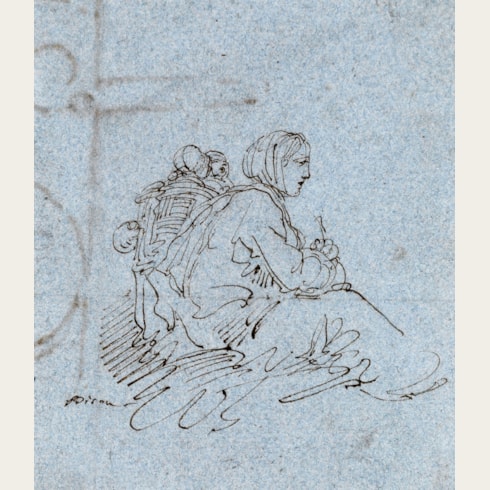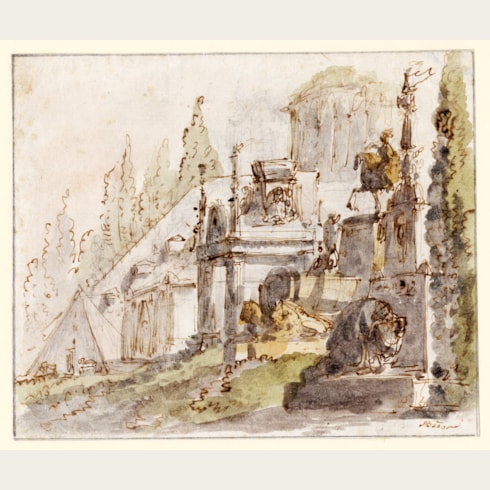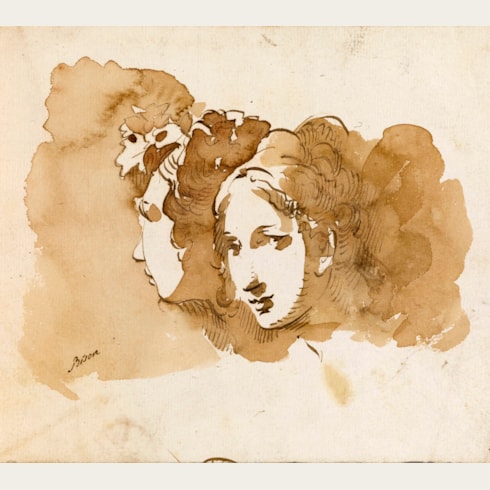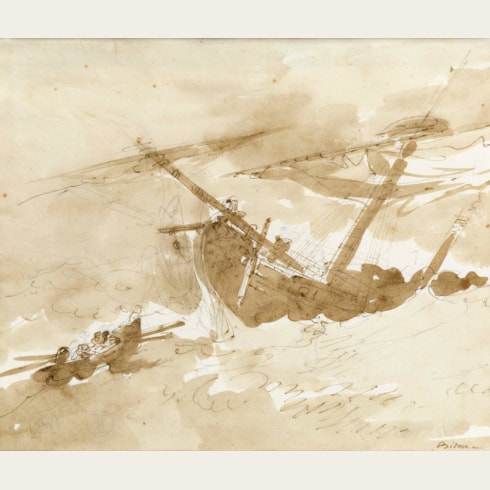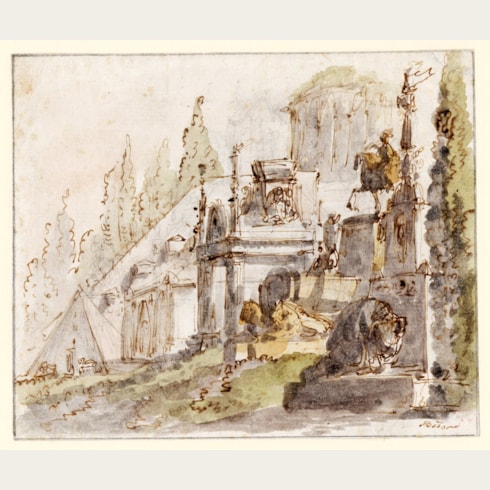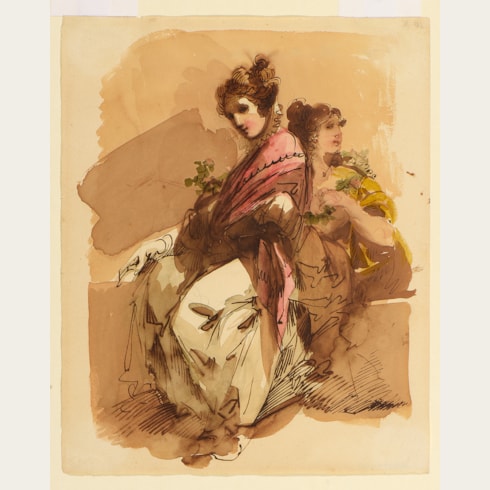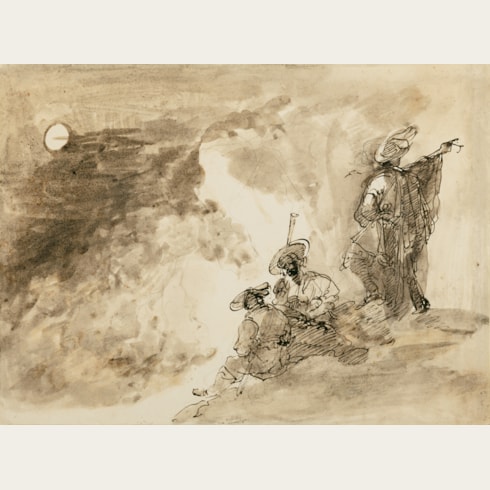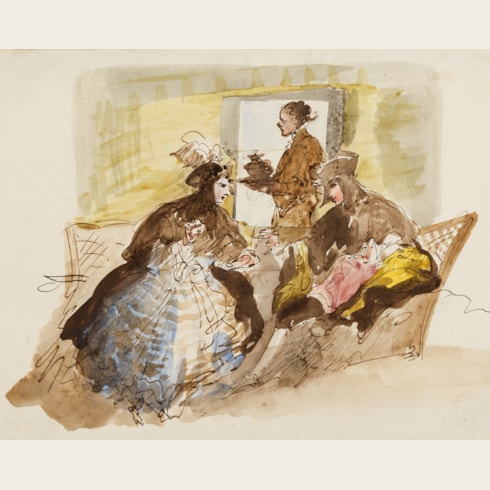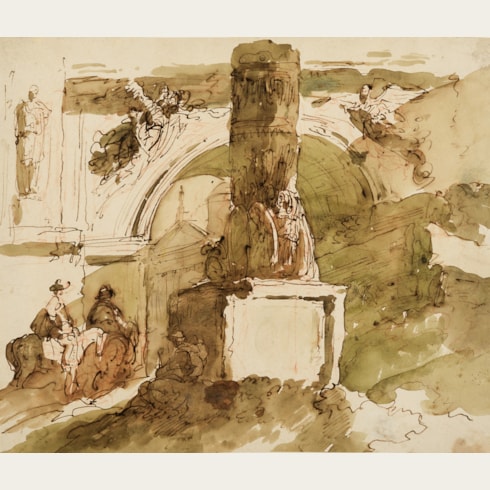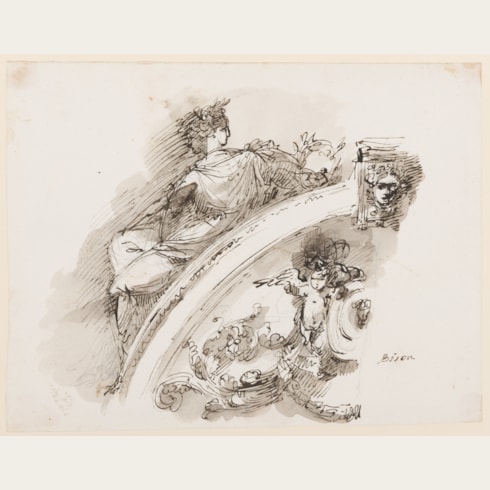Giuseppe Bernardino BISON
(Palmanova 1762 - Milan 1844)
The Piazza San Marco and the Piazzetta, Venice
Inscribed Souvenir de Venise / Vue de la Piazetta, du Palais Ducal, du coin des Procuratie / vers la mer…et isle de St. Georges au fond on the reverse of the backing board
144 x 193 mm. (5 5/8 x 7 5/8 in.) [image]
170 x 221 mm. (6 5/8 x 8 3/4 in.) [sheet]
Venetian views such as this by Bison were in great demand among collectors and connoisseurs of the day. The artist painted a number of gouache views of the city on the lagoon, most of which are fairly small in scale and full of charming anecdotal detail. Many of his views of Venice were inspired by, and in some cases derived from, printed depictions of the city, notably a series of fourteen engravings by Antonio Visentini after paintings by Canaletto, published in 1735 as Prospectus magni canalis Venetiarum and again in 1742 in an expanded edition, entitled Urbis Venetiarum prospectus celebriores, with twenty-four more views. However, Bison was always careful to bring the architectural motifs, as well as the costumes of the figures depicted, up to date.
This view of the Basilica of St. Mark’s, the Doge’s Palace, the Piazzetta and the Campanile may be grouped with a number of small gouaches by Bison of the area of the Piazza San Marco and the Piazzetta, populated by elegant figures. The prominent red and white Austrian flags flying in the Piazza serve to date the present sheet to the period when Venice was occupied by Austria. The city had been ceded to Austria by Napoleon in the Treaty of Campo Formio of October 1797, and Venice was under Austrian administration between 1798 and 1805, and again between 1814 and 1848. Bison is known to have spent some time in Venice around 1800, when he worked at the Palazzo Dolfin, and this gouache is likely to date from this time. Although the artist spent the last four decades of his career living and working in Trieste and Milan, the present sheet may also have been produced on one of the periodic visits that he made to Venice during the latter period of his career.
A closely comparable gouache of the Piazza San Marco and the Campanile seen from a different viewpoint, of the same scale and approximate date, was on the art market in London in 2013.
In the early 1800s Bison settled in Trieste, where among his most important works were the decoration of the Palazzo Carciotti with scenes from the Iliad, painted in monochromatic tempera between 1803 and 1804, and the ceiling of the Palazzo della Borsa Vecchia, completed in 1805. He also produced set designs and decorations, now lost, for theatres at Vipacco and Gorizia. In 1831, at the age of sixty-nine, Bison moved to Milan, where he was active for the remainder of his career. There he was particularly active as a scenographer, painting stage designs for the Teatro alla Scala and other theatres. Although his career lasted well into the 19th century, his style continued to retain something of the flavour of the Settecento. In 1842 an exhibition of around a hundred of Bison’s works was held in Rome. The artist died two years later, in relative penury despite his earlier successes.
Bison was an accomplished and prolific draughtsman, with an oeuvre of charming genre studies and landscapes in pen and ink wash or gouache. His earliest works show the influence of Giambattista Tiepolo and Francesco Guardi, while his later drawings tend towards Neoclassicism. His drawings encompass a wide and varied range of subjects, from religious narratives to genre scenes, capricci, and stage and ornament designs. Few of Bison’s many drawings, however, were done as preparatory studies for paintings, and he seems to have produced a large number of his drawings as independent works of art for sale; this is certainly true of his pastoral landscapes in gouache. Significant groups of drawings by Bison are today in the collections of the Castello Sforzesco in Milan, the Musei Civici in Trieste and the Cooper-Hewitt Museum in New York.






